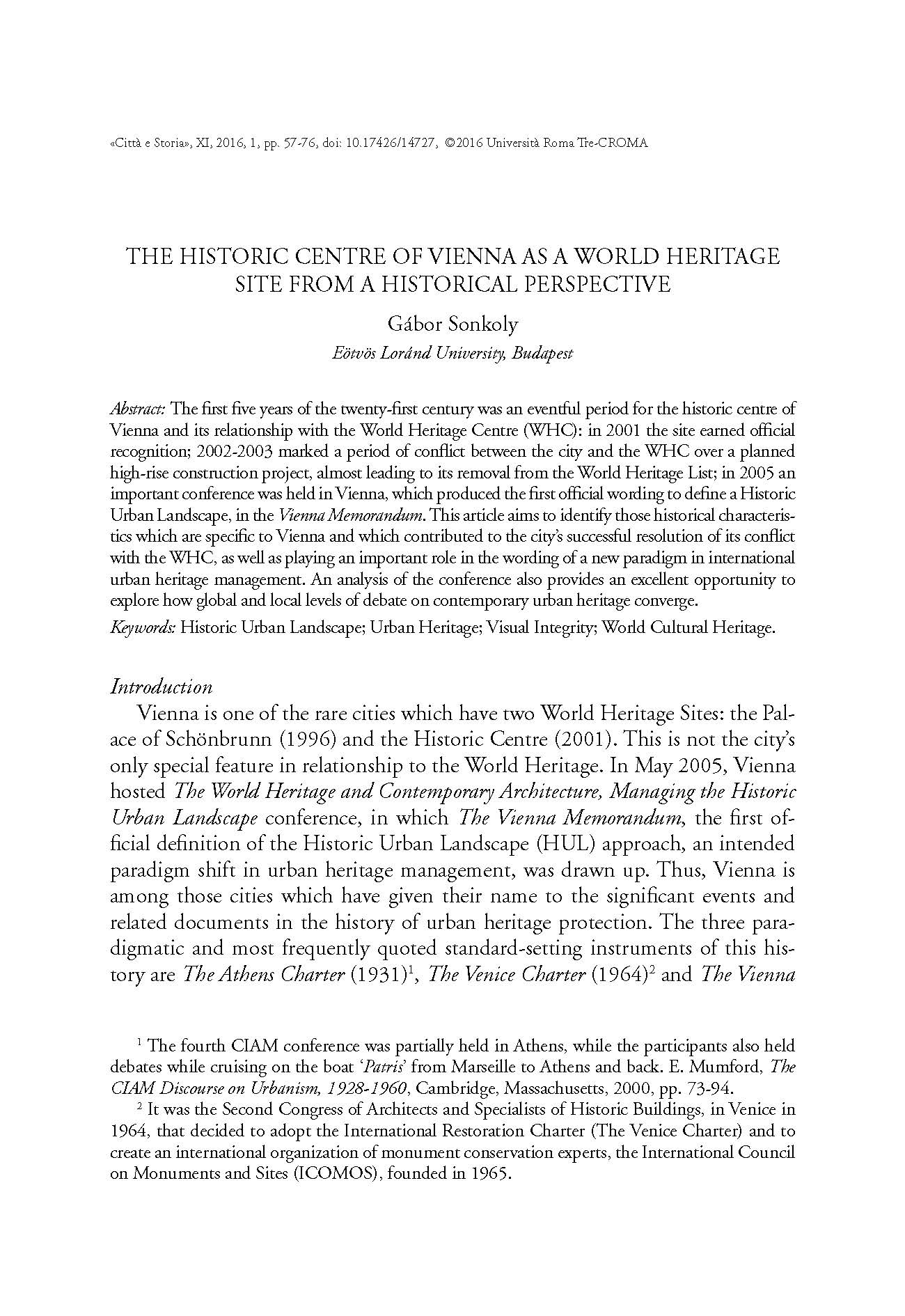The Historic Centre of Vienna as a World Heritage Site from a Historical Perspective
6,00 €
The first five years of the twenty-first century was an eventful period for the historic centre of Vienna and its relationship with the World Heritage Centre (WHC): in 2001 the site earned official recognition; 2002-2003 marked a period of conflict between the city and the WHC over a planned high-rise construction project, almost leading to its removal from the World Heritage List; in 2005 an important conference was held in Vienna, which produced the first official wording to define a Historic Urban Landscape, in the Vienna Memorandum.
This article aims to identify those historical characteristics which are specific to Vienna and which contributed to the city’s successful resolution of its conflict with the WHC, as well as playing an important role in the wording of a new paradigm in international urban heritage management.
An analysis of the conference also provides an excellent opportunity to explore how global and local levels of debate on contemporary urban heritage converge.
The first five years of the twenty-first century was an eventful period for the historic centre of Vienna and its relationship with the World Heritage Centre (WHC): in 2001 the site earned official recognition; 2002-2003 marked a period of conflict between the city and the WHC over a planned high-rise construction project, almost leading to its removal from the World Heritage List; in 2005 an important conference was held in Vienna, which produced the first official wording to define a Historic Urban Landscape, in the Vienna Memorandum.
This article aims to identify those historical characteristics which are specific to Vienna and which contributed to the city’s successful resolution of its conflict with the WHC, as well as playing an important role in the wording of a new paradigm in international urban heritage management.
An analysis of the conference also provides an excellent opportunity to explore how global and local levels of debate on contemporary urban heritage converge.

